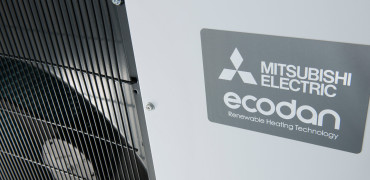The lure of the bright lights of the big city may have waned in recent years, but 80% of us still live in urban environments in the UK.
The draw is real; the town gives us more housing opportunities (although this point has become highly contentious) more job opportunities and increased potential for wealth creation, greater choice in education, healthcare and services, and unmatched avenues for recreation and cultural pursuits.
It’s not surprising that migration to towns and cities was 70% higher than migration to rural areas in England by the end of 2016, creating 400,000 new urbanites that year.
1.5 million healthy life years are lost every year in Western Europe due to environmental noise
The correct mix for our towns
With the continual influx of people into developing urban areas, it is inevitable that more buildings will be needed.
Getting the correct mix of residential and non-residential spaces is an integral part of creating a thriving and harmonious community and it can be done without automatically commandeering greenfield land to build on.
According to a 2018 survey of urban brownfield land registers from 320 local authorities in England, approximately 70,000 acres of brownfield land is available for development.
Whether we choose to refurbish an existing building, or erect a new building on an urban site, we must deeply assess its impact on the surrounding area.
Our built environments are becoming increasingly crowded and useful brownfield land may be in locations that are already densely populated. In order to maintain a pleasant environment for everyone we immediately encounter a key issue for the building’s essential HVAC equipment - Noise.
UK city densities
|
|
Population density – census 2011 (persons per hectare) |
Population density – ONS 2017 estimate (persons per hectare) |
Increase in population density |
|
London |
52 |
57.3 |
10.2% |
|
Birmingham |
40.1 |
42.3 |
5.5% |
|
Manchester |
43.5 |
47.2 |
8.5% |
|
Liverpool |
41.7 |
44 |
5.5% |
|
Leeds |
13.6 |
14.2 |
4.4% |
|
Newcastle |
24.7 |
26.1 |
5.7% |
|
Bristol |
39.1 |
41.9 |
7.2% |
|
Southampton |
47.5 |
50.6 |
6.5% |
|
Leicester |
45 |
48.2 |
7.1% |
|
Cardiff |
24.7 |
25.7 |
4.0% |
|
Edinburgh |
18.1 |
19.5 |
7.7% |
|
Glasgow |
34 |
35.5 |
4.4% |
|
Belfast |
25.7 |
25.7 |
0% |
Curse that planning department
It’s easy to get annoyed with planning legislation. I have been guilty of spouting clichés borne out of frustration from local planning rules, particularly those regarding noise. “But you won’t be able to hear the unit running with all the traffic”, “it’s not that loud and it’s a really efficient product.”
But noise restrictions on building HVAC products are there for good reason in towns and cities. There are a plethora of good quality studies showing the adverse effects that noise can have on personal health and social environments.
One particular statistic that stands out for me is that 1.5 million healthy life years are lost every year in Western Europe due to environmental noise (World Health Organisation, 2011).
A practical approach to minimising the impact of noise from buildings is strict control of the “creeping background” – where the background noise of an area slowly increases over time.
“LA90” is a measure used to determine background noise level. Noise is measured over a specified time, 10pm to 6am for example, and the lower 90% of the data is averaged. This data set reduces the influence of instantaneous noise sources such as shouting or sirens. Most local authorities will limit proposed building HVAC equipment to -10dB(A) below LA90. This will minimise any creeping background effect.
A wide choice of product
When faced with such noise restrictions for HVAC equipment on their projects, building professionals do have a few options.
There is a wide range of products to choose from in the wonderfully diverse and competitive HVAC market. Hopefully a product can be selected that is effective, efficient and maximises the potential of the building whilst still meeting the critical noise requirement.
Another route is the use of third party noise attenuation. This can be in the form of bespoke sound enclosures for the HVAC equipment or pre-fabricated attachments to certain products.
Third party solutions often provide great results in noise reduction when installing HVAC products in tight urban environments, but they do come at a cost. There is also added time and complexity for the project if this route is taken.
In-built noise reduction
Focusing on air conditioning outdoor units in particular, Mitsubishi Electric’s latest generation of VRF and HVRF systems, City Multi YNW, has 5 incremental capacity settings that give a reduced operating sound at each step.
This unique feature can enable a significant reduction in HVAC plant noise with a relatively small reduction in capacity. When selecting air conditioning outdoor units, the capacities and sound levels given by this feature should be considered in the first instance. We may be able to alleviate the need for any additional noise attenuation.
Our urban environments should be bustling enough to fulfil our needs without eventually making us feel uncomfortable. When we construct our buildings and select the products that will service them we must always keep this at the forefront of our thinking.

